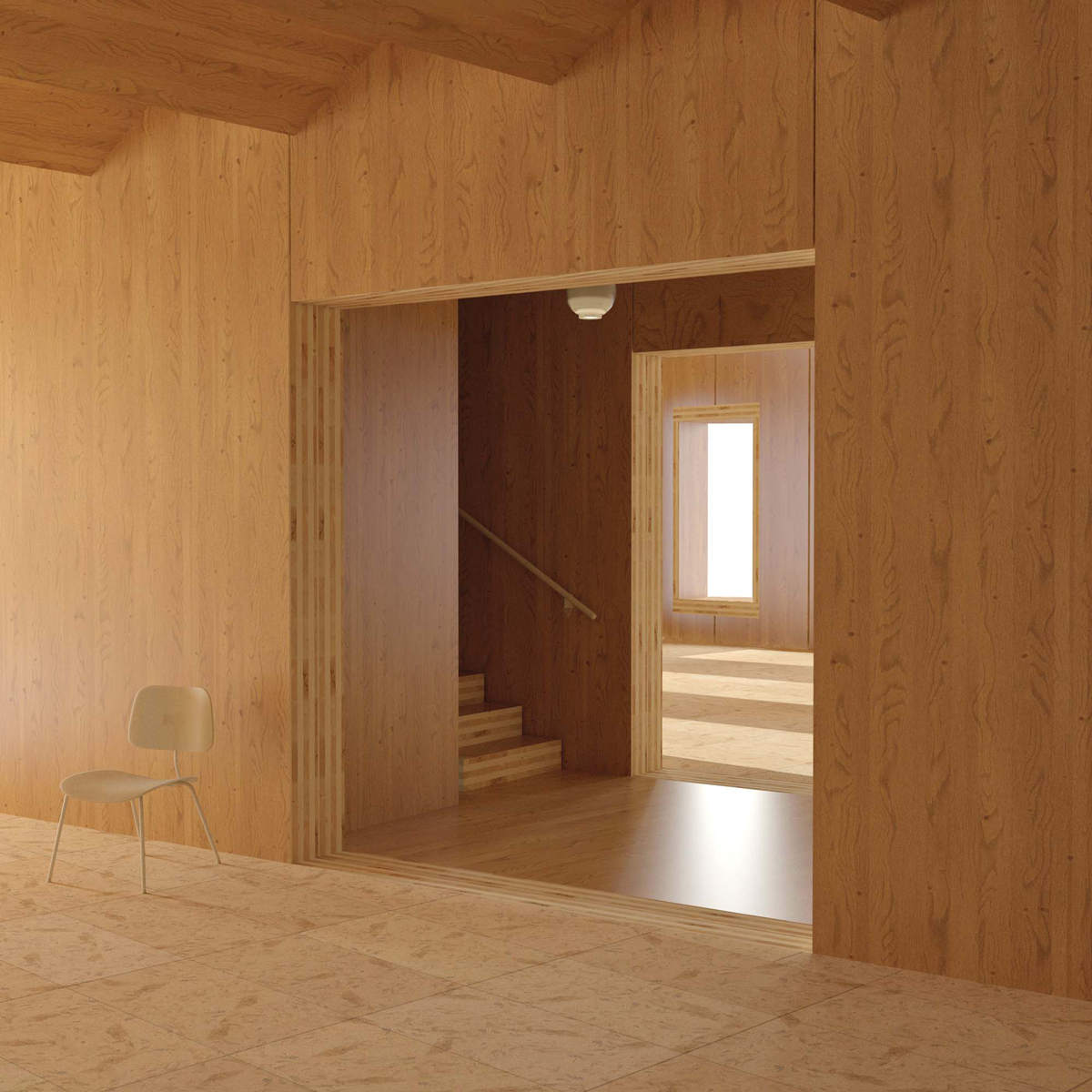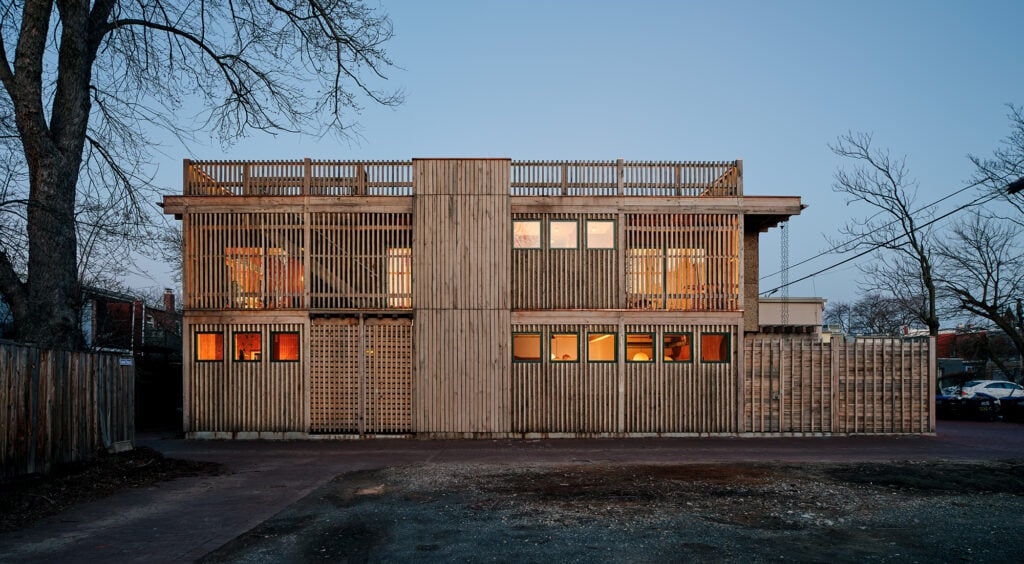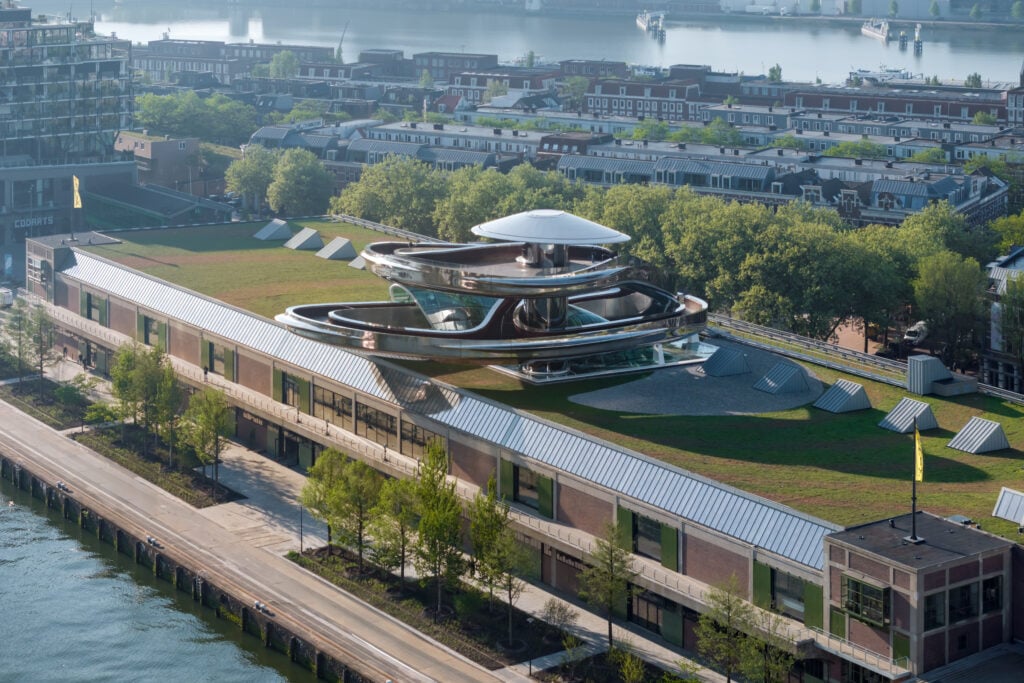
July 2, 2024
For These Students, New Technologies Unlock Ageless Construction Materials
Natural building materials like wood and stone have been employed for millennia. However, these METROPOLIS Future100 honorees are finding inventive ways to apply them, imagining a new generation of sustainable and culturally attuned projects that frequently partner with new technologies.
In response to the devastating 2021 Dixie Fire in Greenville, California, Chizumi Kano (BArch graduate, California College of the Arts) devised a new lodge and community center that incorporates mass timber throughout, responding to the area’s long history of logging, ranching, and hospitality, while proposing a new breed of fire-resistant, sustainable materials. C-House Connected Community offers a Welcoming Center (containing a library and museum), short-term rental units, dining, and a makerspace organized around a communal courtyard. The structures incorporate CLT for roofs, panels, structural grid, columns, and mullions. To leave a trace of the site’s recent history, the ruins of fire-scorched brick walls are preserved in places, merged with wood blocks. To achieve openness and ventilation, glass walls would open to the interior courtyard.

The ability to push traditional materials to perform new functions, with new levels of performance, was a through line in several other Future100 projects. Samuel Wylie (MArch graduate, University of Oregon) conceived Baffled!, which challenges the typically planar usage of cross-laminated timber, engaging it in layered and angled configurations that build thickness, strength, and fire resistance. In some cases the structure removed the need for beams while creating a unique visual differentiation.
Other projects explore combinations of natural and synthetic elements. For Mahama Refugee Shelter, a series of two-story emergency shelter modules for the Mahama Refugee Camp near the eastern border of Rwanda, Andrea Rubero (BArch graduate, Rice School of Architecture) drew from the umiak, an Indigenous kayak supported by a wooden frame, held together in tension with animal skin. Rubero’s concept employs a frame of wood joists and bulkheads infilled with lighter, more malleable polycarbonate panels, coated fabric partitions and surfaces, and tensioned cables to produce shelters with private sleeping areas and public cooking and congregation zones. Each shell cantilevers over the other, introducing ventilation and natural lighting while also offsetting the shelters slightly to open them up more to the public spaces.


Ala Zuchniak (bachelor of interior design graduate, Toronto Metropolitan University) developed research for Rock Skin, an ongoing design research project of Studio Pararaum’s Linda Zhang and Meng Li, aiming to form an “empathetic connection between sourcing and consumption.” Rather than continually drawing resources from Switzerland’s mountainous regions through mining, Zuchniak’s proposal takes latex skins and lidar scans bearing the textures of Swiss mountain caves, using these to produce bioplastic re-creations via 3D printing and vacuum forming. The result is fascinating, beautifully diverse objects that can further inform bioplastic design via a large array of colors, patterns, and typologies—from hanging pendants to table luminaires.
Would you like to comment on this article? Send your thoughts to: [email protected]
Latest
Profiles
BLDUS Brings a ‘Farm-to-Shelter’ Approach to American Design
The Washington D.C.–based firm BLDUS is imagining a new American vernacular through natural materials and thoughtful placemaking.
Projects
MAD Architects’ FENIX is the World’s First Art Museum Dedicated to Migration
Located in Rotterdam, FENIX is also the Beijing-based firm’s first European museum project.
Products
Discover the Winners of the METROPOLISLikes 2025 Awards
This year’s product releases at NeoCon and Design Days signal a transformation in interior design.





